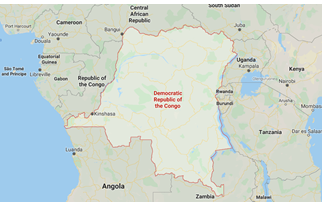
A group of children in Lubumbashi, Democratic Republic of Congo. The country is committed to fostering inclusive growth, including the provision of free basic education (photo:Alphorom/iStockphoto)
Five Takeaways from Democratic Republic of the Congo's IMF Program
December 23, 2019
The Democratic Republic of the Congo’s fragile economy faces many long-standing challenges and remains highly vulnerable to shocks. To help the country strengthen its economy, the IMF has just approved a loan under its Rapid Credit Facility (RCF) combined with a Staff-Monitored Program until May 2020.
The IMF’s loan valued at about $368 million supports the government’s efforts to restore economic stability and improvements in governance and transparency. Here are five key points about the new IMF operation in support of the Democratic Republic of Congo.
Fast Facts
- Real GDP (2019 projected): 4.3%
- Per capita income: $470
- Population): 97.879 million
- Date of Membership: : September 28, 1963
- Challenges: The Democratic Republic of the Congo (DRC) is a fragile, low-income country with poor governance. The country has been affected by a recent decline in commodity prices, the worst Ebola outbreak in its history, and a sharp fall in international reserves (to the equivalent of about only one week of imports). These developments have taken place against a background of new spending initiatives and looser expenditure oversight during the recent political transition. The RCF loan, together with domestic efforts to discontinue central bank financing of the government, should pave the way to rebuild international reserves to help absorb external shocks.
- Engagement: The IMF’s approval of the RCF is part of more active engagement between
the DRC and the IMF after the recent peaceful political transition. The
previous IMF financial arrangement with the DRC ended in 2012 and the
economic assessment for the country was concluded in August 2019 after
a three-year delay.
An additional step in those reinvigorated relations may take place in the second half of 2020, with a possible second loan to the DRC under the Extended Credit Facility (ECF). This, in turn, should help catalyze budget support from other development partners like the World Bank and the African Development Bank. The World Bank is also currently finalizing a
$1 billion three-year operation to support an initiative to introduce free basic education into the country.
- Policies:The RCF is accompanied by a Staff-Monitored Program (SMP) until May 2020 that is based on strong ownership from the authorities and important policy commitments. Besides rebuilding international reserves, policies under the programs aim to restore fiscal discipline by (i) strengthening domestic revenue collection; (ii) limiting spending to available resources—including for new initiatives like the free basic education—through mandatory spending caps; and (iii) ending the central bank financing of the deficit and relying on the issuance of treasury bills to manage short-term liquidity needs. Monetary and exchange rate policies will aim to keep inflation low and maintain adequate international reserve buffers. Financial sector stability will be strengthened through continued improvement of the central bank’s banking supervision capacity.
- Governance: The DRC must keep up efforts to improve governance, increase transparency, and fight corruption, especially in the extractive sector. All new mining contracts should be published, as well as audits of state-owned enterprises. The authorities are committed to improving the business climate and fostering inclusive growth. President Félix Tshisekedi’s 100-day program, with its strong emphasis on building infrastructure, especially roads, and the free basic education initiative should help achieve the latter goal.
- Next steps: The SMP should give the country enough time to design a deeper structural reform program—aimed at delivering economic gains to a broader segment of the population and tackle deep-rooted social needs—that would be eventually supported by the second IMF loan. The recommendations from an ongoing governance assessment and upcoming safeguard assessment missions, as well as from a Public Expenditure and Financial Accountability exercise, led by the World Bank, should inform the authorities’ medium-term economic and structural reform plans.








